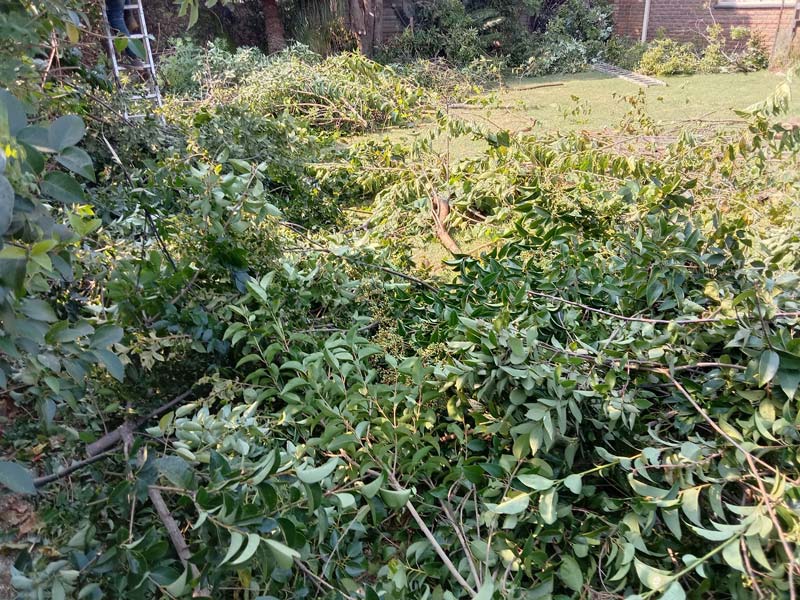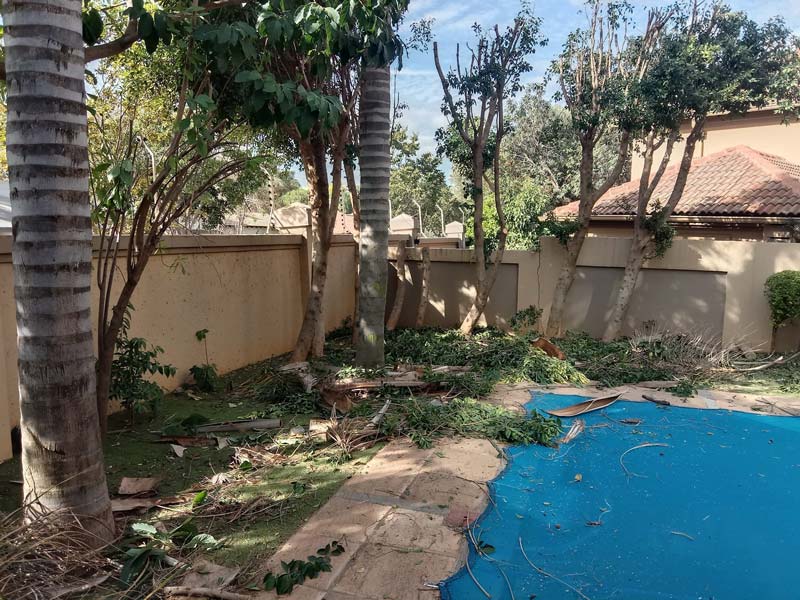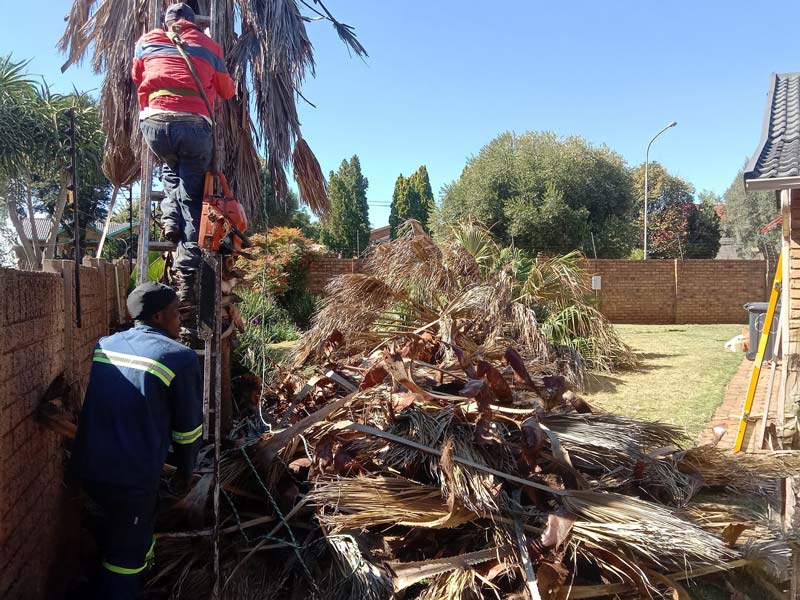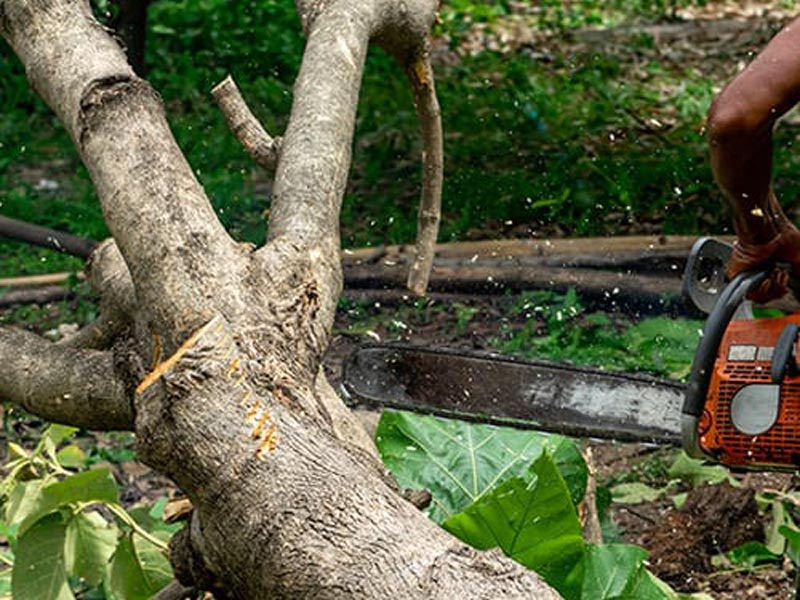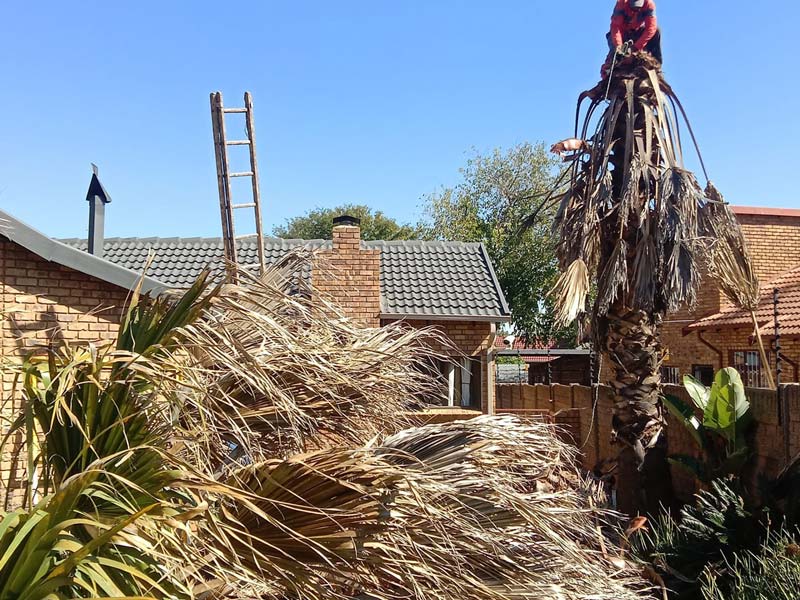To keep our trees healthy in Pretoria East, we should watch for these ten early warning signs. First, yellowing or browning leaves often indicate nutrient deficiencies. Next, premature leaf drop and reduced leaf quantity could signal stress. Visible fungal growth and dead or falling branches point to potential health issues. Furthermore, leaning trees and pest infestations may compromise stability. Finally, we must consider root damage and the proximity of trees to power lines. Comprehending these signs can help us take proactive measures. Stay tuned for more essential tips.
Yellowing or Browning Leaves
When we notice yellowing or browning leaves on our trees, it can indicate several underlying issues that need attention.
Nutrient deficiencies, particularly in iron or manganese, can lead to chlorosis, where leaves turn yellow while veins remain green. This condition is often caused by alkaline soils that prevent trees from accessing these essential microelements.
Environmental stress, like drought or poor drainage, may also cause leaves to discolour as trees struggle to absorb essential nutrients.
Furthermore, damage to roots from heavy traffic or construction further impairs nutrient uptake.
Recognising these signs early helps us take action, ensuring our trees remain healthy and lively.
If we observe these symptoms, it’s time to consult with professionals.
Premature Leaf Drop
Premature leaf drop is a concerning symptom for tree health that demands our attention.
When we notice leaves falling unexpectedly, it may indicate underlying issues. Environmental stress, like inconsistent soil moisture, can lead to leaf curling and shedding as trees struggle to conserve water. Temperature fluctuations and poor soil conditions also contribute to this problem. Notably, proper watering techniques can mitigate many of the causes of early leaf drop and promote overall vitality in trees. Regular visits from a professional garden service can help monitor tree health and ensure proper care.
It’s essential to identify these signs early, as repeated episodes of leaf drop can weaken our trees over time. If we’re noticing this happening, let’s consider seeking professional guidance to guarantee our trees receive the care needed to thrive.
Reduced Leaf Quantity
Noticing a decrease in leaf quantity on our trees can be alarming, as it often signals underlying health issues. Nutrient deficiencies, particularly in nitrogen and phosphorus, can greatly impact leaf health, leading to premature leaf loss.
When these nutrients are lacking, trees struggle to maintain foliage, and we may see smaller leaves or even abnormal leaf drops. Furthermore, environmental stressors like poor soil quality and inadequate moisture can exacerbate these issues. Regular professional tree pruning can help address some of these health concerns by removing dead or diseased limbs that may be affecting the tree’s overall vitality.
Visible Fungal Growth
Fungal growth on trees can be a clear signal that something’s amiss with their health.
It’s vital we remain vigilant about these signs, as they often indicate underlying issues that could threaten our trees’ well-being.
- Common types include powdery mildew and black knot fungus.
- Conditions such as poor air circulation promote fungal infections.
- Utilising fungal identification techniques aids in early detection.
Dead or Falling Branches
Many trees we encounter may exhibit signs of dead or falling branches, and these indicators are important for maintaining tree health and safety.
When branches lack green vascular tissue or display brittle characteristics, it suggests a severe decline in branch health. Such deadwood can compromise a tree’s structural integrity, increasing the risk of sudden breakage during storms or high winds.
Regular inspections allow us to detect these issues early, promoting a safer environment. If you notice dead branches, it’s essential to consult professionals who can guarantee your tree remains healthy and secure. Professional tree cutting services ensure responsible green-waste handling is a priority in maintaining the area’s safety and aesthetics.
Don’t hesitate, as proactive care is key.
Hollow or Cracked Trunks
A tree’s trunk plays a critical role in its overall health and stability, and any signs of hollowing or cracking shouldn’t be overlooked.
These issues can noticeably affect the trunk’s structural integrity and may lead to further problems if not addressed.
- Look for visible cavities or holes in the trunk.
- Watch for abnormal bark characteristics, like peeling or splitting.
- Check for signs of pests, such as exit holes or wood debris.
Regular trunk inspections help us catch these issues early, ensuring your tree remains healthy and safe. Additionally, seeking professional tree felling services can prevent hazardous situations before they escalate.
Don’t hesitate to reach out if you notice any of these signs.
Leaning Trees
Noticing structural issues like hollow or cracked trunks is essential for tree health, but leaning trees also signify serious concerns that require our immediate attention.
Leaning affects tree stability, often due to environmental factors like soil erosion or uneven light. Mechanical obstructions from nearby structures can also contribute to the causes of leaning.
Furthermore, root rot or soil saturation create an unstable environment for trees. If we spot a tree leaning in the direction of structures or power lines, we need to act quickly.
Emergency tree felling services can provide professional assistance to ensure the safety of your property while addressing the issue at hand. Consulting an arborist can provide clarity on necessary actions to guarantee the safety of our environment and community. Don’t wait; reach out today!
Pest Infestations
Pests can severely compromise the health of our trees, often without immediate visible signs. We need to stay alert for subtle indicators that our trees require attention.
Here are some common signs of pest infestation:
- Chewed or missing leaves.
- Cottony masses or spider webs on branches.
- Discolouration or wilting of foliage.
Employing effective pest identification techniques can help us recognise infestations early.
Once identified, using suitable pest control methods guarantees our trees regain their strength and robustness.
If we notice these symptoms, it’s crucial to act promptly to protect our beautiful greenspaces.
Let’s keep our trees healthy together!
Root Damage or Decay
Monitoring our trees goes beyond just spotting pests; we must also be vigilant for signs of root damage or decay.
Observing sudden leaning, small branches at the trunk base, or disturbed soil around the roots can indicate underlying issues. Moreover, visible fungi or discoloured roots often suggest root health concerns linked to poor soil conditions.
We should consider external factors, like nearby construction or excessive moisture, that can harm our trees. Catching these signs early allows us to protect our urban greenery and prevent further damage.
If you notice these symptoms, it’s wise to consult a professional for an assessment.
Proximity to Power Lines
When trees grow too close to power lines, they pose significant risks that can affect both safety and service.
Regular tree maintenance is essential to prevent power outages, fires, and other hazards. Here are some key points to take into account:
- Branches can touch or fall on power lines, leading to outages or fire risks.
- Storms increase the likelihood of tree or branch falls, obstructing repairs and access.
- Vandalism or tampering near trees can further disturb electrical safety.
- Implementing professional line clearing services can help maintain safe distances and prevent these dangers.
We must prioritise maintaining safe distances between trees and power lines to support community safety and guarantee reliable electrical service.


